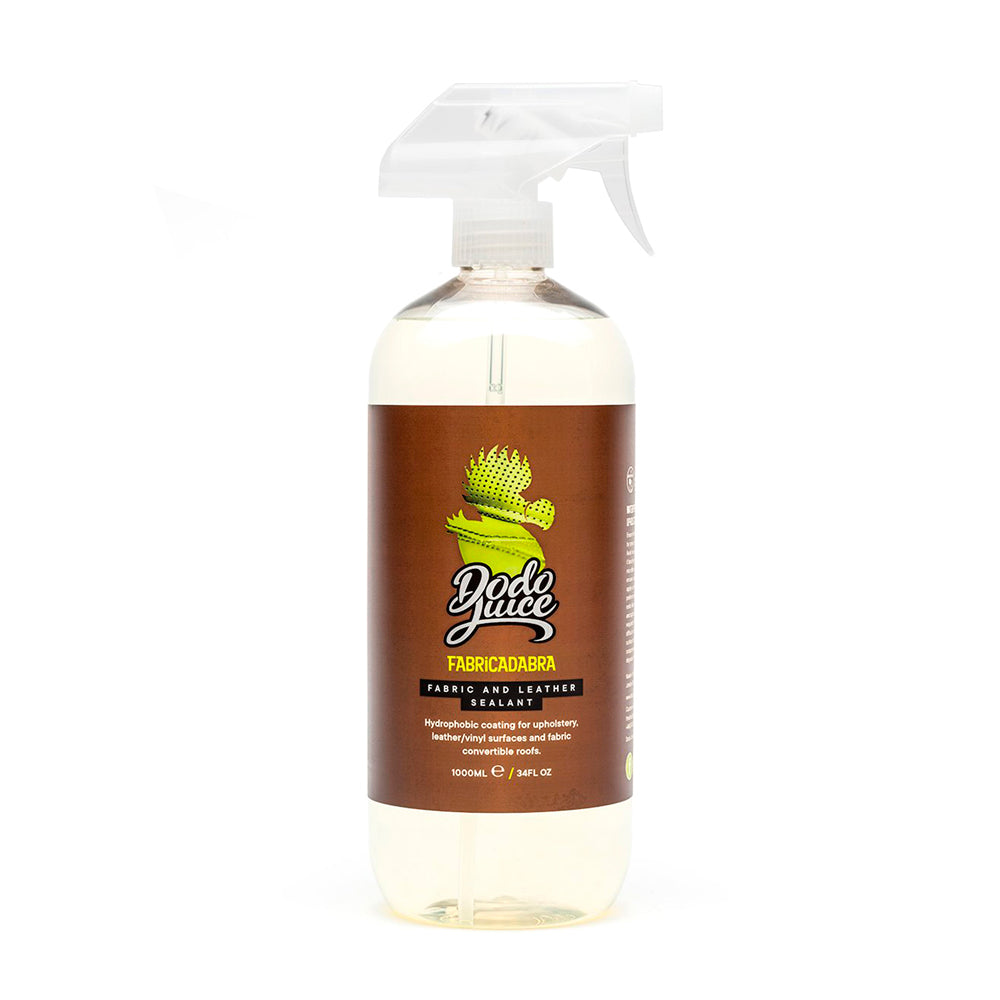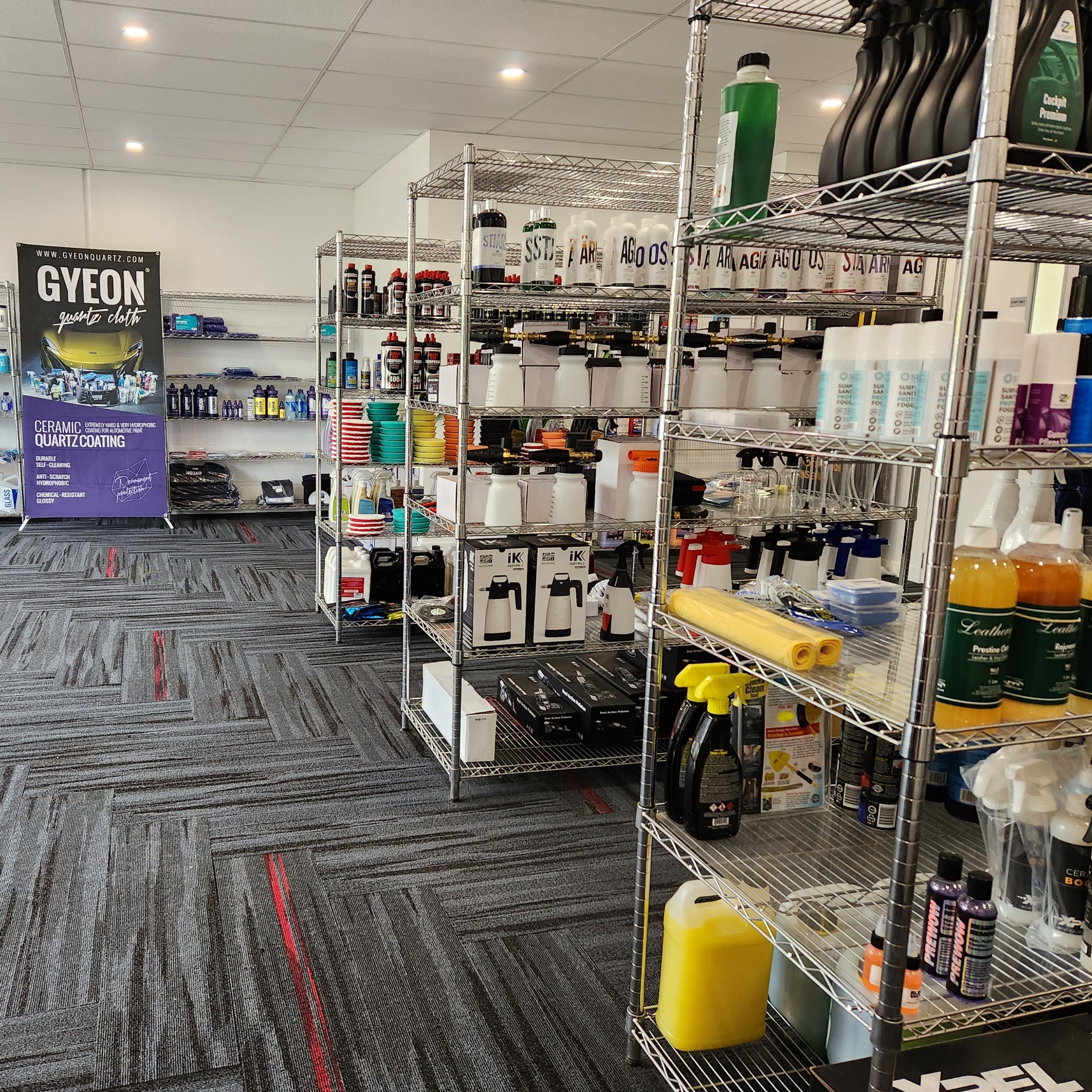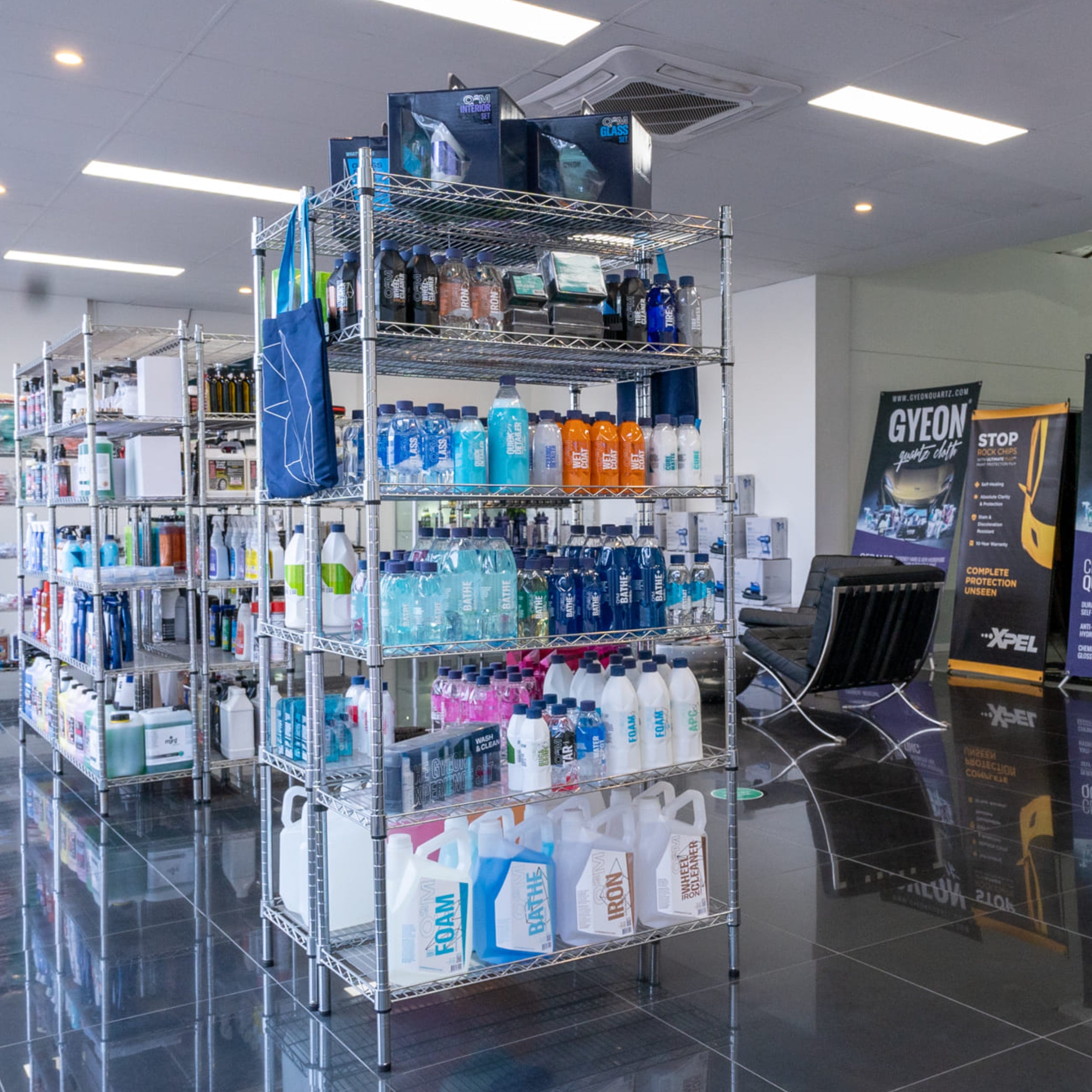
DODO JUICE
Dodo Juice Fabricadabra 1L
Free Shipping For Orders Above $150.00 – Conditions Apply
Same Day Dispatch
on orders before 12pm
Available In:
Fabricadabra is a cost-effective nano-tech fabric sealant for using either to waterproof interior upholstery (to make it more resistant to spillages, and easier to keep clean) or to seal a fabric/canvas roof of a soft-top convertible.
It delivers best results when applied to a densely woven fabric via a brush or roller (saturation rather than light spraying) in multiple coats. This is because fabric and upholstery can be very uneven and inconsistent microscopically, with lots of protruding filaments, pores and air traps. If a water molecule can find a way through, the fabric will absorb. Therefore, complete coverage and a full coating can be a challenge to achieve and may not even be possible with certain materials (carpets will be far worse than velour seats or soft top roofs).
Product Features and Benefits
- Effectively cleans all types of fabrics, including carpets, seats, and mats
- Removes stubborn stains, dirt, and grime from the surface
- Leaves a fresh scent that lasts long
- Easy to use with a spray nozzle
- Safe for use on all types of fabric surfaces
Fabricadabra is best applied neat for maximum effect, but it can be applied to a wet (freshly cleaned and rinsed) surface to help it flow - although we definitely recommend a follow up coat with this method.
For seats/interior upholstery, ensure the surface is as clean as possible and apply Fabricadabra either as a spray (inconsistent, not as effective, risk of overspray to other surfaces) or via a brush/roller (recommended). If applied using a saturation technique, apply it to complete panels in a section at a time, up to stitch lines, creases, folds or other natural material breaks. This helps prevent watermark effects. Allow to dry and then repeat process. More coats generally mean more water repellence.
For soft-tops, ensure the canvas/fabric is washed, rinsed and clean (a low foam shampoo solution may suffice or use an APC (All Purpose Cleaner) or Fibre Reviver upholstery cleaner and rinse thoroughly afterwards so that no foam remains). Then either allow the roof to dry for maximum performance or apply the product to a wet surface for better flow. You can apply Fabricadabra either as a spray (inconsistent, not as effective, risk of overspray to other surfaces) or via a brush/roller (recommended). If applied using a saturation technique, apply it to complete panels in a section at a time, up to stitch lines, creases, folds or other natural material breaks. This helps prevent watermark effects. Allow to dry and then repeat process. More coats will mean more water repellence.
After application, try and keep the hood dry for 24 hours. Rain can pull sealant off onto surrounding paintwork if the sealant has not cured, causing streaks (see below). Garage application is the ideal state of affairs, or wait until a long period of fine weather.
Longevity of the coating will depend on numerous factors, mainly number of coats and wear/usage. The driver's seat will get more use than the rear bench, for example. If the surface is well-prepped and multiple saturation coats are applied, we would suggest 3-12 months of protection on interior upholstery and 3-6 months of protection on soft-top roofs (or much longer on garaged cars).
Please note that overspray droplets onto bodywork or interior surfaces, or run-off residue (caused by rain after soft top application etc) may be unsightly and difficult to remove. Always be careful during application and do all you can to avoid these scenarios
Step 1: Vacuum the Surface
Remove any loose dirt, debris, or crumbs from the fabric surface by vacuuming it thoroughly. This will ensure that the cleaner can penetrate deeply into the fibers of the fabric.
Step 2: Dilute the Cleaner
Dilute the Fabricadabra cleaner with water according to the instructions on the bottle. The recommended dilution ratio is usually 1:10, which means one part cleaner to ten parts water. Mix the solution well in a spray bottle.
Step 3: Spray the Surface
Spray the diluted cleaner evenly onto the fabric surface that you want to clean. Be sure to work in small sections at a time to prevent the cleaner from drying on the surface before you have a chance to wipe it off.
Step 4: Scrub the Surface
Using a soft bristle brush or sponge, scrub the fabric surface gently in a circular motion to help the cleaner penetrate into the fibers. Pay special attention to any heavily soiled areas or stains.
Step 5: Wipe Away the Residue
Using a clean microfiber towel or cloth, wipe away any residue left by the cleaner. Repeat the process if necessary until the fabric is clean and free of any stains or dirt.
Step 6: Allow the Surface to Dry
Allow the surface to air dry completely before using or sitting on it. Avoid exposing the surface to direct sunlight or heat as it dries.


